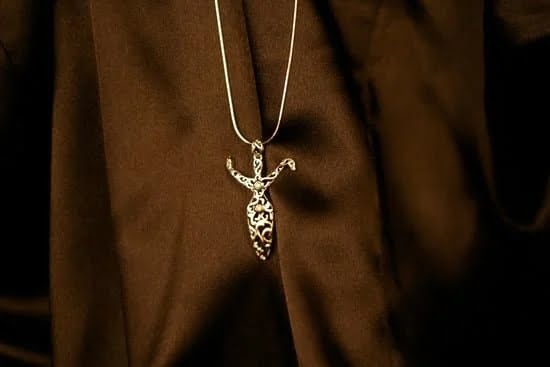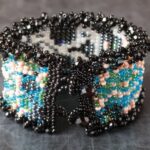Introduction
Fine jewelry stands for quality, craftsmanship and design. Whether it is a timeless heirloom passed down through generations, or a modern piece of jewelry made from the finest materials available, fine jewelry has long been associated with value. Quality in fine jewelry making is based on the use of precious metals, as well as gemstones that are free from defects and have consistent characteristics. Craftsmanship refers to the expertise required to turn these raw materials into something special and unique through imaginative designs and intricate handcrafting. Design refers to the creation of pieces that express personal taste in an aesthetically pleasing form. All three aspects – quality, craftsmanship and design – are important factors when choosing fine jewelry. Whether looking for something classic or truly unique, all pieces should meet these standards if they are to be considered true fine jewelry. With any great piece of art come special considerations in terms of care and maintenance; keeping precious stones tightly secured while also taking care not to damage them over time is essential for longevity.
What Makes Fine Jewelry Quality?
Materials: Fine jewelry is typically made of precious metals such as gold, silver, or platinum. The quality of the metal used can vary, with higher carats representing purer and higher qualities of metal. Other materials may also be used along with precious metals such as gems and stones, synthetic rubies or other materials.
Construction: Jewelry pieces must be able to withstand wear over time as well as possible damage from scratches, impacts and other daily activities. Therefore fine jewelry must be constructed and created by experienced master jewelers ensuring strength and durability of the piece during and after it is made.
Design Elements: A truly fine jewelry piece stands out for its quality craftsmanship but more importantly for its distinct design elements. These can include details such as carvings and engravings in the metal or patterns set with different colored stones or gems. Furthermore designs elements can include abstract shapes and forms such as swirls, circles and other repeating motifs. Craftsmanship in setting stones is a hallmark sign of quality craftsmanship seen in fine jewelry as well.
Popular Precious Metals
Fine Jewelry standards refer to the quality and value of a piece of jewelry. Popular precious metals used in creating fine jewelry typically include gold, silver and platinum. Gold is the most commonly used for fine jewelry due to its aesthetic appeal and malleability. Silver is also used in applying an elegant finish that does not require the same maintenance as other fine jewelry pieces, such as with rose gold or white gold. Platinum is a highly sought after metal for use in making luxurious fine jewelry due to its shine, durability and strength. All three metals are classic when it comes to purchasing fine crafted jewellery; so whether you opt for classic yellow gold, the patina of silver or the luxury of platinum – you are guaranteed to find something stunning within this assortment of metals. Moreover, all three metals can be combined together to create unique designs which provide an individual flair for anyone looking for something truly special.
Evaluating Gemstones
When it comes to fine jewelry, there are certain standards of quality that should be met. Among these considerations include cut, color and clarity of gems used. When evaluating and choosing gemstones for a piece of jewelry, one needs to pay attention to the three Cs – Cut, Color and Clarity.
Cut refers to how well the stone has been cut and polished in order to give it its maximum brilliance. The angle and height of a given gemstone can alter how light reflects off its surface so selecting the right cut is important for admirable aesthetics. Symmetry is also key when judging a stone’s cut, as asymmetrical stones may appear more dull than those that have been properly crafted.
Color is often the most subjective aspect when assessing gemstones but the beauty lies in their unique hues regardless what an individual’s preference may be. With diamonds for example, clear or colorless diamonds tend to garner higher prices however some colored stones can be extremely rare and valuable due their excellent features which surpass that found in other colors.
Finally Clarity pertains to the lack of visible flaws found within the gemstone such as air bubbles, cracks or chips all visible under 10x magnification usually prescribed by a professional jeweler or gemologist. When assessing clarity appearance becomes less important than if there are any deficiencies which may impact its overall quality – especially if these occur near its surface area where it will be more perceptible to someone’s eye later on down the line.
Setting Techniques
When it comes to the construction of fine jewelry, there are multiple setting techniques that can be used. Traditional designs employ a range of tried and true processes, such as prong, bead or flush settings. In modern designs, processes like pave,channel and tension are used in an effort to highlight the beauty of the gemstones. Customization options also encompass a range of complex setting options. Examples include invisible and mosaic settings which showcase cuts in intricate patterns while protecting small diamonds and other precious stones from damage. Combining multiple setting types can also create unique textures and designs. For example, combining pave and prong settings could result in an intricate pattern that stands out against plainer designs. The selection of setting techniques is one factor to consider when creating fine jewelry pieces. By understanding what the options are, a skilled designer can bring together design elements to create truly remarkable jewelry
Beyond Sparkle
When it comes to jewelry, you can create a look that is truly unique by embracing some of the age old standards of fine jewelry. Whether your preference is delicate and subtle or bold and daring, there is a standard for those who enjoy expressing their own personal style through their chosen pieces.
The time-honoured four C’s of fine jewelry – cut, carat, colour and clarity – remain as relevant today as ever. A certified diamond with perfect VS2 clarity maximises the sparkle potential in any piece it is set in. When it comes to traditional gemstones such as rubies, sapphires and emeralds, seek out the highest grade specimens; these are often graded on unique scale created specifically for these gems. The color should be consistent throughout the stone without any visible inclusions or blemishes.
Beyond the technical standards of fine jewelry, you could also consider adding a personal touch to your pieces. For example, choosing coordinating metals such as gold and rose gold allow you to create custom combinations that articulates an individual sense of style. Or you could opt for vintage inspired designs for a more timeless feeling piece. Setting diamonds into lacy filigree mountings also creates a delicate aesthetic look which is perfect for lovers of classic design. For modern flair choose geometric shapes in more complex settings made up from intertwined bands or unusual materials like mokume gane with its distinctive layered texture giving off an unmistakeable contemporary vibe.
Caring for Your Valuable Investment
When it comes to fine jewelry, it is important to remember that it is a valuable investment that needs proper care. Regular cleaning and storage of fine jewelry is essential for maintaining its beauty, shine, sparkle, and lifespan. Here are some helpful tips:
1. Cleaning: Make sure to use a soft cloth or brush designated for use with jewelry when cleaning your item. Also avoid ultrasonic cleaners, harsh chemicals, and soap as they can cause damage if not used properly. If you’re uncertain how to clean certain pieces in your collection, seek out professional help from a jeweler rather than risk damaging the piece yourself.
2. Storing: It’s best to keep your pieces separated and secure in individual cases or compartments so that they don’t rub against other items or scratch each other during storage. Avoid open-air displays as dust particles can settle onto the items over time and affect their quality; instead opt for more protected alternatives like velvet-lined box drawers or sealed plastic bags. Additionally, it’s advisable to store items containing delicate gems (like pearls) separately from harder items as sudden movements or knocks may dislodge these fragile stones from their mountings.
Conclusion
No matter what the occasion, fine jewelry should be carefully and thoughtfully selected. Quality jewelry is not cheap, but it will maintain its value over a lifetime and pass on to future generations as an heirloom. For these reasons, it’s important to have a clear understanding of the standards that identify fine jewelry. Knowing these standards can help you make an informed choice and confidently invest in quality fine jewelry. Quality fine jewelry has been crafted with excellence for centuries and is highly valued for its beauty and endurance. With proper care, your fine jewelry can be enjoyed for generations to come!

Welcome to my jewelry blog! My name is Sarah and I am the owner of this blog.
I love making jewelry and sharing my creations with others.
So whether you’re someone who loves wearing jewelry yourself or simply enjoys learning about it, be sure to check out my blog for insightful posts on everything related to this exciting topic!





